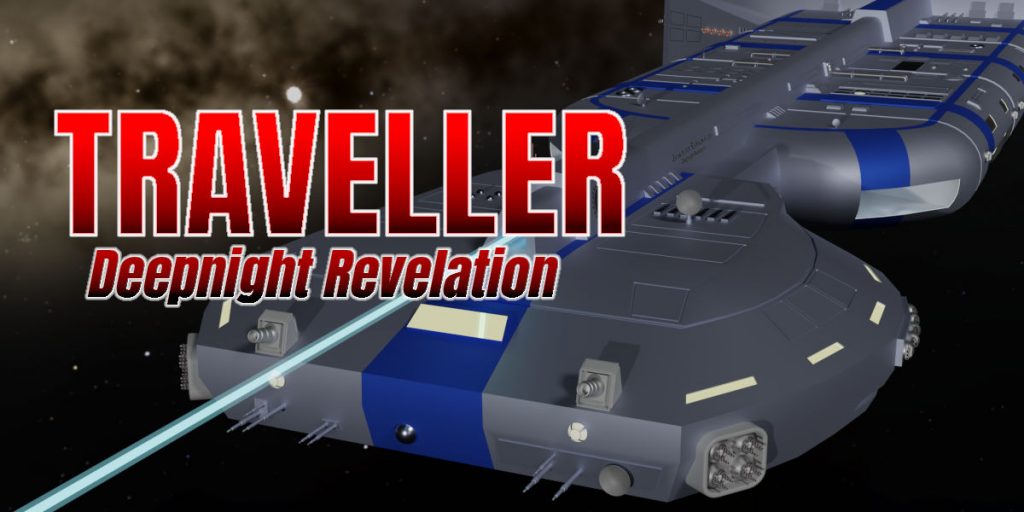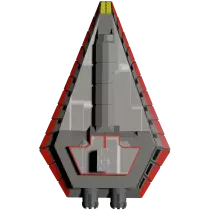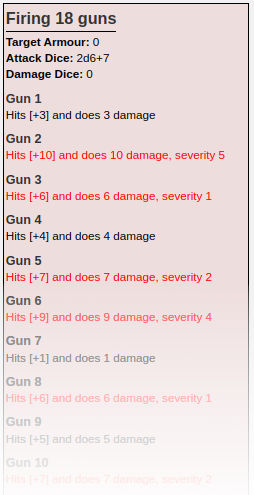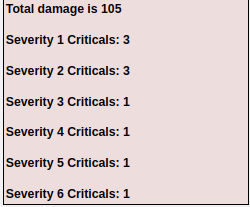Battle Stations

At the end of our previous session, the Travellers had encountered a space based biological life form, which seemed to be directing them to the wreckage of a spaceship. As they approached in their scout ship, the ‘space whale’ as they’d called it flew around, keeping a safe distance but also seeming to show interest. Several EM signals were picked up from it, and they broadcast some back, to try and figure out communication with the creature.
The wreckage itself seemed to be the remains of some TL9 craft. It was a long cylinder, the front of it torn off and missing, the back having a primitive jump drive and fusion torch reaction drive.
Putting the scout between the wreck and the local star, some of them EVA over to the wreck. Given how close it is to the star, they want to keep out of direct sunlight.
They find the corpses of three crew members in the wreck – humanoids, though not humans. They are feathered, and smaller than humans, but otherwise having a standard bipedal form. It looked like they’d miss-jumped, and most of their food supplies were gone. It looked like they’d repaired the jump drive several times. Several attempts had been made to repair other parts of the ship as well, and there was even a binder stuffed into the life support system in an attempt to fix that.
Amongst the personal artefacts on the ship, were some sketches of other worlds, and a small book full of dense text with a spiral pattern on the front cover. It was thought that it might be a religious text of some kind. They took these, what computer systems they could, and the corpses back to their scout for later research.
On the way back, Shiiguma decided to fly over to the creature in her vacc suit, to try and pet it. It was much bigger than her, but seemed a bit nervous as she approached, sending various complex radio signals – presumably in an attempt to communicate. Then it darted forward, grabbed her up in its face tentacles, and rapidly accelerated off.
She felt no acceleration as this happened, though did throw up in her suit when it started spinning around with her. Then it stopped, and took her back to the ship and let her go, before darting off.
The science team ensured they swabbed the outside of her suit for samples, then gave her a thorough hose down before she was allowed back inside.
Back at the Deepnight Revelation, they wanted to finish some preliminary research on what they’d found out about both the creature and the ship, just in case they had any need to investigate further. So Sublieutenant Sir Alixe Vanaadi argued that now would be a good time to perform a virtual battle exercise. She had some software and a couple of naval training exercises (of course she did), and wanted to plug them into the ship so the crew could practise combat.

This was as much an exercise for myself and the players as it was for the characters. Starship combat doesn’t happen much in my game, so we’re not used to the rules. More importantly, nobody really has a practical understanding of what the ship’s strengths and weaknesses are.
It was decided to keep it simple, so the scenario involved a single light cruiser against the Deepnight, with the Deepnight on a seek and destroy mission.

The sensor operators started off by detecting the enemy ship at a range of Distant, whilst it was on a high thrust intercept with the Deepnight. At this range, neither ship could do very much except close. The cruiser could have fired missiles at this point, but they would have had large penalties at such a long range.
As they approached to within Very Long range, the Deepnight opened up with its two newly installed particle barbettes. They hit, scratching the paint work on the target. Meanwhile, the cruiser launched a salvo of 480 missiles. It continued to do that over the next few turns.
I had decided to use the full set of starship combat rules, rather than the abstracted capital ship combat rules. Since there were only two vessels, abstracting it all didn’t seem necessary, but I do wonder whether that fixes some of the issues.
The Deepnight tried to use electronic warfare to disrupt the missile salvo, and had some success, but with the limitation of only one sensor operator being able to disrupt any given salvo, taking out a few missiles every turn didn’t really have much effect. For smaller ships, where salvos might be a dozen missiles, electronic warfare can make a big difference. But under the Mongoose rules, they don’t scale to larger salvos. I’ll be interested to see whether the new edition of High Guard (due out next month) fixes this.
The Deepnight continued to do small amounts of damage to the cruiser. Unable to score critical hits due to its size, and with only two weapons, it really wasn’t effective at this range. The best tactic for the cruiser would have been to try and keep range at Distant, ignore the minor damage and keep on firing missile salvos until the Deepnight was destroyed. The point of the exercise wasn’t to ‘win’ though – neither from my perspective nor the perspective of the crew.

The missiles had a flight time of two turns (advanced missiles, accelerating at 15g), so the first salvo soon reached their target. Point defence from the Deepnight was considerably more effective, taking out just over a hundred missiles.
To make things simpler, I’d written a quick Roll20 api script to automate the firing of lots of guns. For the point defence, I set damage and armour to zero, to total up the effect of each of the 18 beam turrets.
!gunner 18 2d6+7 0 0
It would also work out critical hits, but this wasn’t relevant for point defence. 105 missiles shot down by the beam lasers, plus another 10 from the PDS systems, resulted in 359 missiles striking home. It rolled badly for damage, doing a mere 2,513 hits.
Compared to the few dozen hits the Deepnight had done to the cruiser by this point, it was a lot, though the Deepnight could soak up quite a few of these. It demonstrated though that large missile salvos could do a lot of damage. The second salvo when it hit did better, causing 4,732 hits, and causing a severity one critical hit against the hull – for another one point of damage.

By this time the two vessels were closing to within Long range, which allowed both of them to start bringing more weapons to bare. Since the Deepnight had initiative, it fired its particle barbettes and fusion barbettes, the latter doing a couple of hundred hits of damage.
Then it was time for the particle beam spinal mount. They got a good hit, and I realised I wasn’t sure whether effect would add to the damage roll or not. As it happened, they rolled badly, only getting a five. With the x1000 multiplier for spinal weapons, that was either going to be 5,000 hits, or 15,000 hits depending on whether the effect added on.
I ruled for the latter, and the cruiser was blown to pieces. Due to a quirk of the ship designs in this edition of High Guard, the light cruiser has no armour, so it probably would have been destroyed in a second hit if I’d ignored the effect bonus. In turn, the Deepnight would have suffered similar damage against the meson spinal of the light cruiser, but would have had enough hits (it started with over 40,000) to survive, though along with the multiple missile salvos would have been in a bad shape.
So the simulation exercise was ended, with an expensive victory being declared for the Deepnight. The crew (and players) now have a much better appreciation of how the Deepnight handles in combat, and know that avoiding going up against missile armed ships is probably a good idea.
1 Response